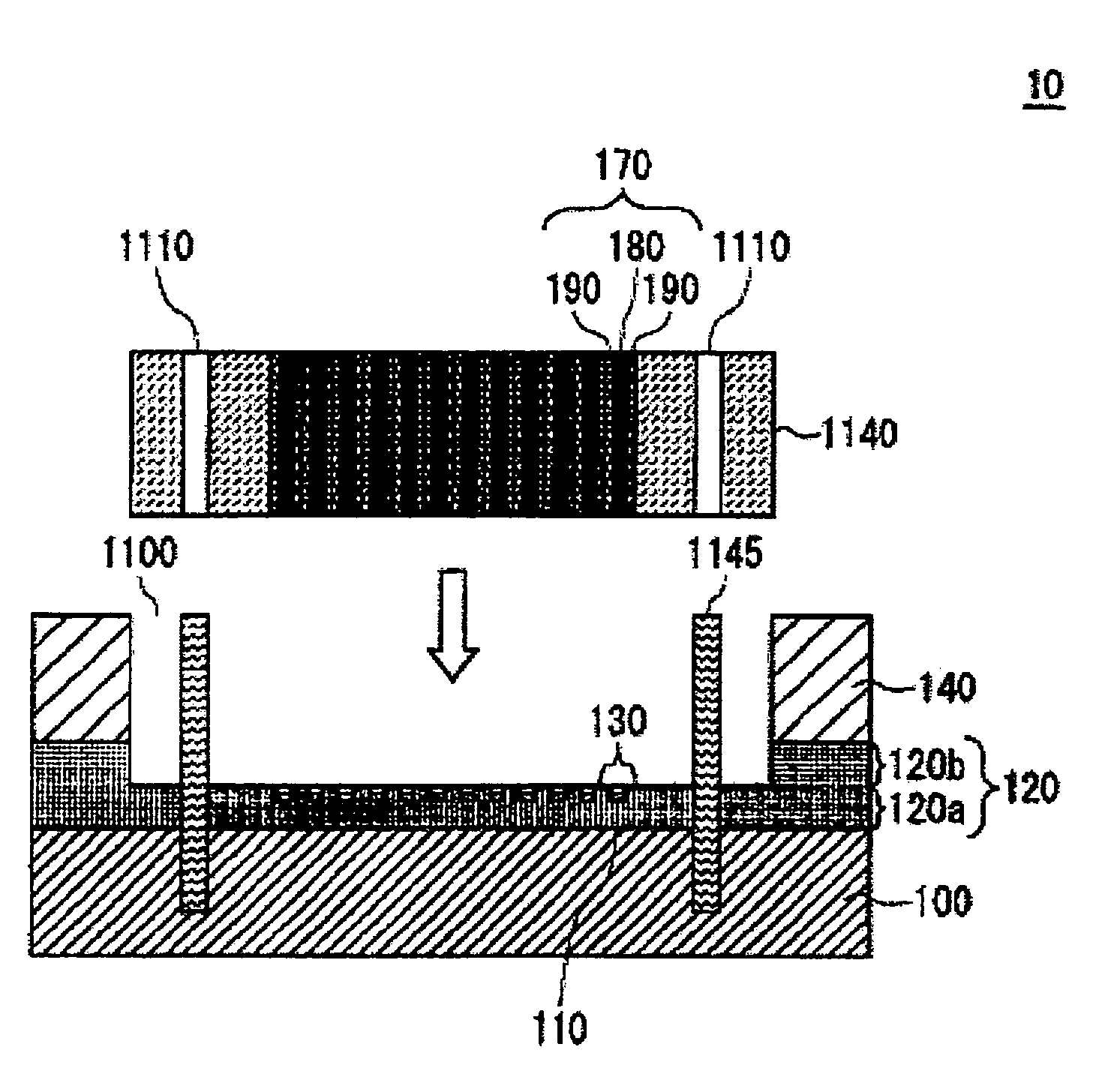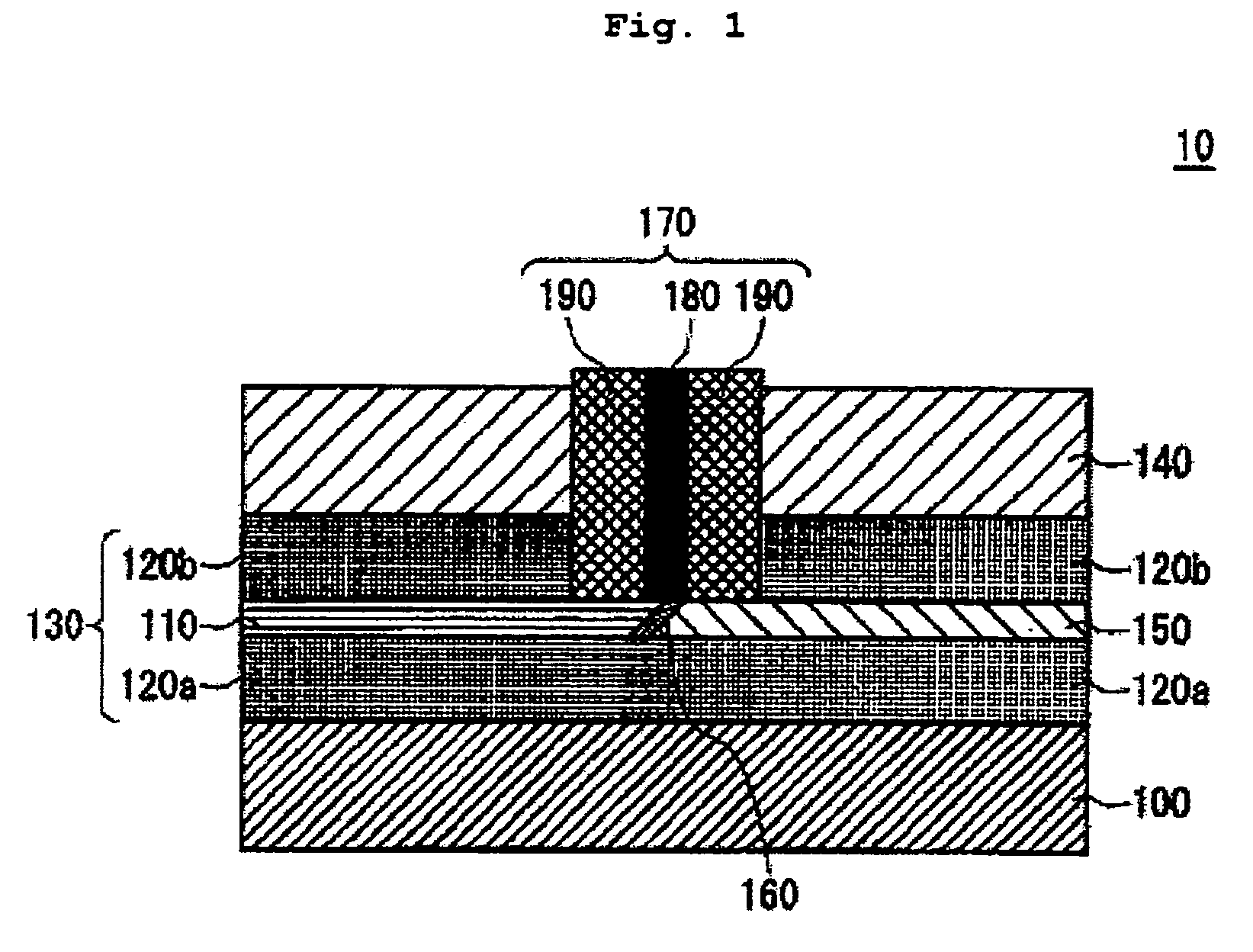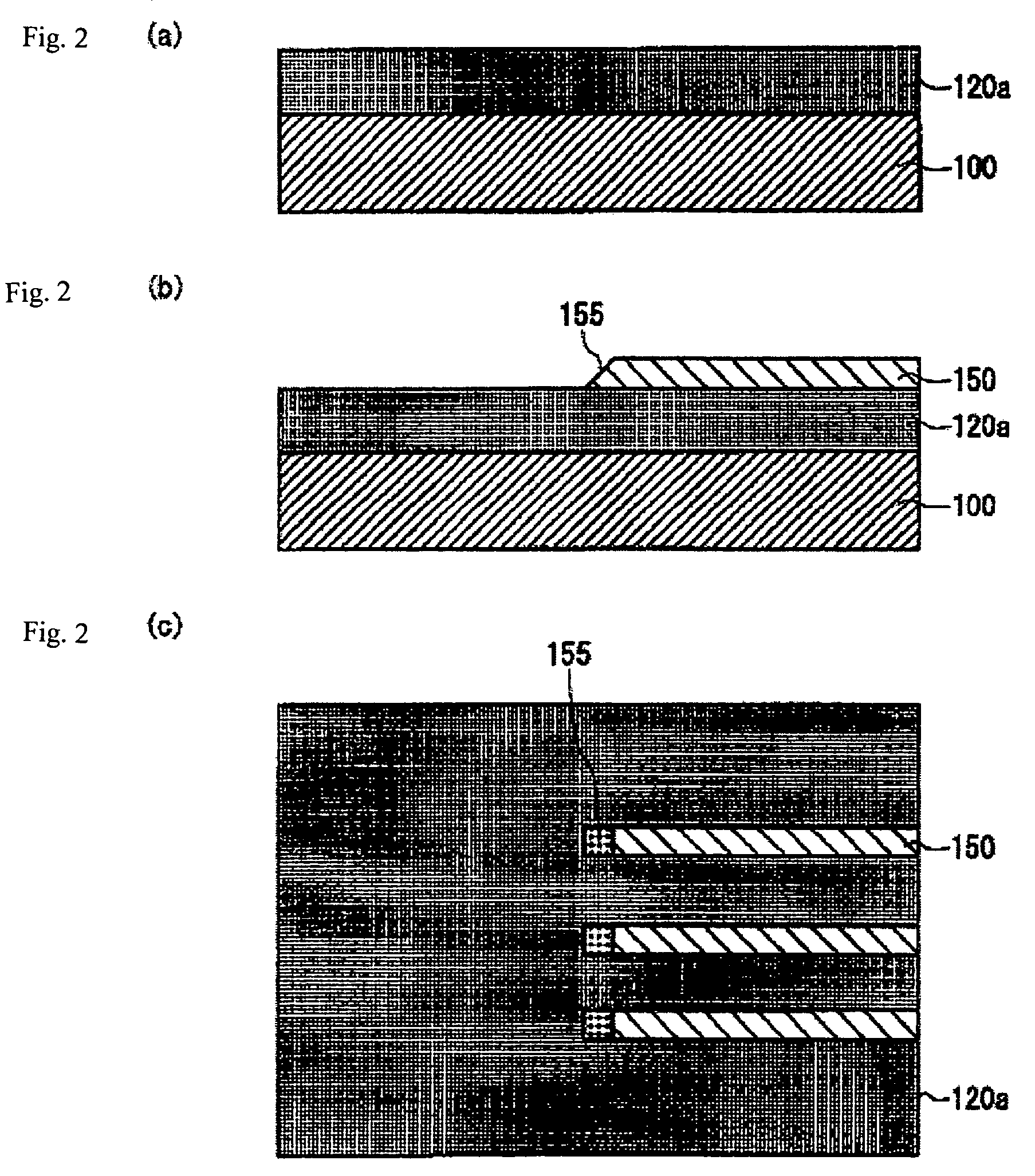Optical transmission substrate, method for manufacturing optical transmission substrate and optoelectronic integrated circuit
a technology of optical transmission substrate and optical transmission substrate, which is applied in the direction of circuit optical details, optical elements, instruments, etc., can solve the problems of difficult to realize the performance of even interconnection within the board, the rate control of the computer performance, and the difficulty of high-performance mounting boards
- Summary
- Abstract
- Description
- Claims
- Application Information
AI Technical Summary
Benefits of technology
Problems solved by technology
Method used
Image
Examples
Embodiment Construction
[0056]The present invention will be described below through embodiments of the invention. However, the invention according to scope of claims is not limited to the following embodiments. Moreover, not all combinations of features described in the embodiments are essential to solving means of the invention.
[0057]FIG. 1 shows a configuration of an optical transmission substrate 10 according to this embodiment. The optical transmission substrate 10 according to this embodiment has the configuration in which an optical waveguide 130 is provided between a first substrate 100 and a second substrate 140 and light reflected from the optical waveguide 130 toward the second substrate 140 is guided to vicinity of an upper surface of the second substrate 140 by an optical fiber 170. Thus, positioning of an end of the optical waveguide 130 and the optical fiber 170 is facilitated and a high coupling efficiency can be realized. Moreover, the provision of the optical waveguide 130 between the firs...
PUM
 Login to View More
Login to View More Abstract
Description
Claims
Application Information
 Login to View More
Login to View More - R&D
- Intellectual Property
- Life Sciences
- Materials
- Tech Scout
- Unparalleled Data Quality
- Higher Quality Content
- 60% Fewer Hallucinations
Browse by: Latest US Patents, China's latest patents, Technical Efficacy Thesaurus, Application Domain, Technology Topic, Popular Technical Reports.
© 2025 PatSnap. All rights reserved.Legal|Privacy policy|Modern Slavery Act Transparency Statement|Sitemap|About US| Contact US: help@patsnap.com



